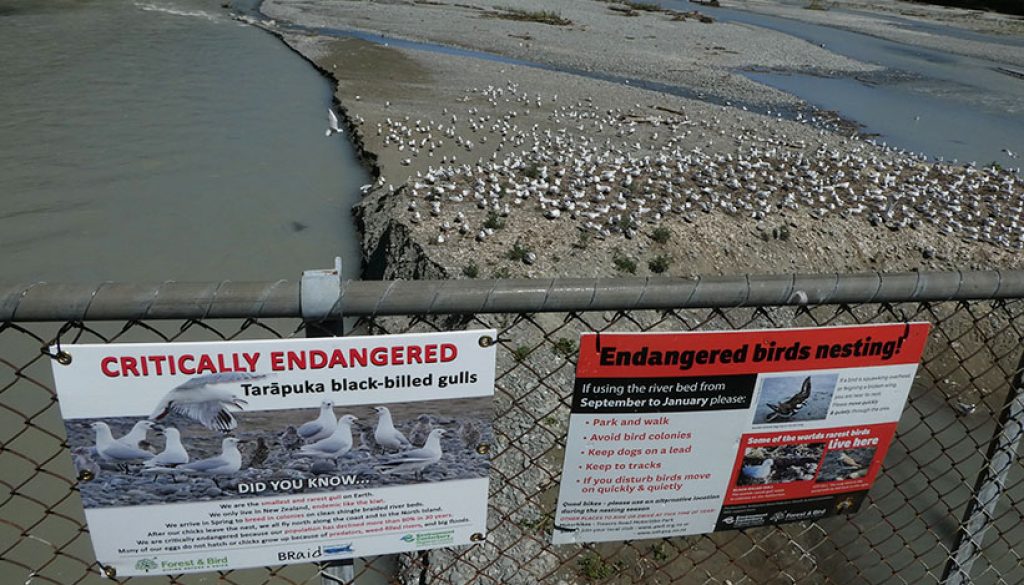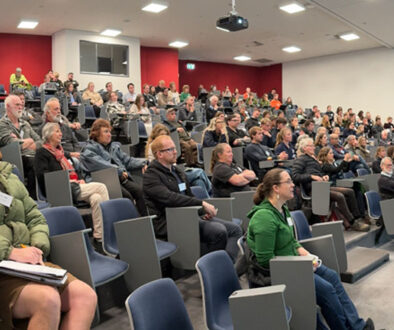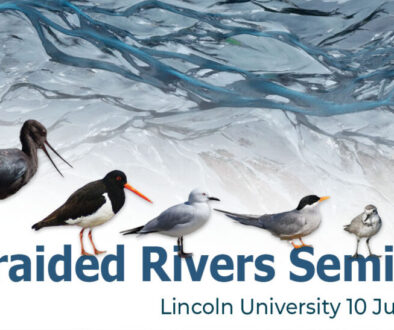There were several early spring sightings in the area including about 4000 near Klondyke on the Rangitata River. Some of these may have moved nearer to the Rangitata mouth where a colony settled.
Along the
Ashburton Hakatere River they were seen scouting and feeding around the Hakatere mouth, Lake Hood and in rural areas from August. A colony settled up stream near Walkham’s Road, another just below SH1 bridge and a third about 0.5km upstream from the river mouth.
Initially the SH1 colony was about 1000 birds and chicks were hatching but following a fresh in December they re-nested on and near to a large shingle pile remaining after the repairs to damage to the bridge following the May flood event. Most of this group had a successful nesting season. There were several egg laying episodes on more flood prone shingle and the number of gulls decreased to less than 400. There appeared to be a number of gulls of which did not rear chicks. There were as few as 100 fledging. By early March all the chicks had fledged.
At Hakatere Huts, Kaylene Donaldson monitored a colony that eventually nested below the Caretaker’s cottage area. The 1,000 birds appeared to quite unsettled for some time before eventually exhibiting breeding activity.
The Hakatere team continued trapping in the vicinity catching the usual suite of predators. Late in the season a person was seen exercising twelve large dogs in the lower reaches of the river mouth over a couple of weeks. Despite reporting this to various organisations, DOC, ECan and ADC dog control, there were no options to deal with this situation.
In March, Peter Howden also reported seeing groups of 1000 or so at Lake Hood near near Walkhams road and elsewhere.
This year the river was too high to survey in November. Don Geddes and Peter Howden commented on various sightings during the season. Otherwise apart from Andrew Crossland’s valuable monthly surveys at the river mouth for ECan the long history of Ashburton River surveys has become irregular. This is due to higher flows in the river which prevent on the ground surveying. The loss of this regular monitoring of the river and its suite of birdlife is a shame.
The high flows did ensure a weed free habitat for the various species that nest on the river as well as limiting vehicle access to the river.
Thank you to BRaid and ECan for creating our informative sign for display at places where people pass by such as on SH1 bridge where passersby stop to look at the colony in the river below.
Unfortunately—or from the gulls’ point of view, fortunately—the change to the
tarapuka status was announced a few days after we put the sign up. Their status improved from being critically endangered to at risk, in decline.
Edith Smith
Ashburton




